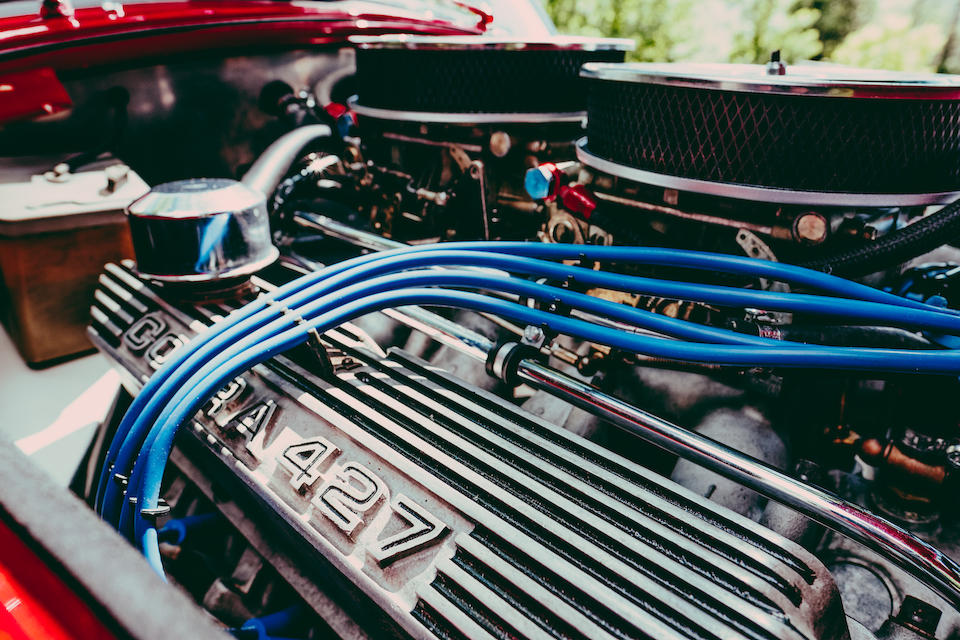Half as polluting as a mobile phone…
According to a recent study, the average use of an old car hardly pollutes the environment.

This is a 1966 Cobra with a 7-litre V8 big block engine with 425 hp. Depending on how it is driven, it consumes about 15-25 litres per 100 km. A muscle car like this, with its inefficient internal combustion engine, is certainly a major contributor to greenhouse gas emissions, isn’t it?
Apparently not. An average classic car causes about half as many emissions per year as the use of a smartphone.
How polluting is driving a classic car? Half as polluting as a mobile phone…
But first, a little more background: Why are we talking about veteran vehicles at all?
Because the classic car market is booming like never before (it has been for quite some time, but crucially it has increased again strongly during the lockdown, or pandemic).
Parallel to this, the supplier industry has expanded. In Europe and the USA, there are countless companies offering highly specialised products and services: restorers, auction- and event companies, spare parts, literature, racing specialists etc. This is far more than a niche industry. In the UK alone, for example, the classic car industry turns over 20 billion GBP a year.

There is no question that older engines cannot compete with modern engines in terms of efficiency and emissions. Nevertheless, an average classic car undercuts both in terms of CO₂ emissions per year, according to a study by the Centre for Economics and Business Research (CEBR).
A humpback Volvo P544 can have more than 3 million miles on the clock and is greener than any Prius.
But : No matter how environmentally friendly modern cars are in operation, their production can sometimes be extremely harmful to the environment. Almost everything is new, the metal is melted and often produced thousands of miles away and transported by sea in huge ships. The electronic components contain lithium, cobalt and zinc, all of which have to be extracted from the earth in open-cast mines, which can lead to toxic waste water, not to mention further transport. In addition, the interior and many components are often made of plastics and the plastic waste is a serious environmental challenge. EV manufacturer Polestar, as an example, cites 24 tonnes of CO₂ emissions generated for the production of its Polestar 2 mid-size sedan.

Now the good news
A grandma has been driving her 1957 beetle since … well – since 1957!
In the Western world, the typical car owner buys a new car every 5 to 7 years (!) on average. “The sooner you replace a car, the more CO₂ it emits. It’s no different with electric cars, because when demand for new cars increases, manufacturers’ emissions skyrocket,” says Shigemi Kagawa, a professor at Kyushu University’s Faculty of Economics, in a study. Any emission savings during operation are lost because new emissions are produced during the manufacture of the new car.

Back to the topic of classic cars; they score several points in the above-mentioned categories: Their manufacturing emissions today are zero. The car is built, the emissions produced in the past are sunk costs. If you drive a 50-year-old classic, you have saved the manufacturing emissions of up to 10 cars.
The engines of these classic cars are inefficient. But they are also used massively less. On average, a classic car is driven about 1000 miles a year. The comprehensive CEBR study thus calculated the ecological footprint of a typical classic car to be … 563 kg of CO₂ emissions per year. This corresponds to about half the emissions caused by the annual use of a smartphone. Or a one-week holiday on the Mediterranean….
What do you think ? Share your opinion with info@collectorscarworld.com

Photos: SSSZ
Credit/Source: watson.ch /Oliver Baroni










